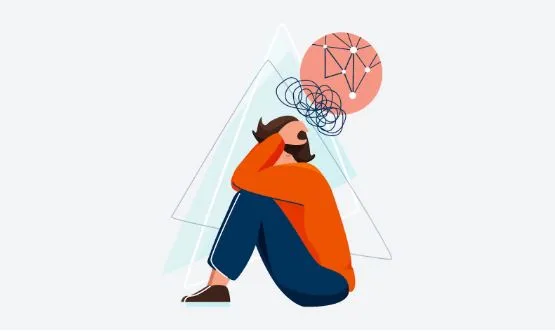Symbolic Storytelling in Logos: Using Hidden Meanings and Negative Space
It’s hard to undermine the power of storytelling, especially when it comes to branding. People easily connect with a brand that has a story to tell.
The more engaging the story, the more your audience will connect. But what if you get to share your brand story via a logo? Interesting, right? Symbolic storytelling in logos makes all the difference.
If your logo can narrate your brand story, you win! But it all comes down to how well you can integrate the logo symbolism for branding. A logo design company in Dubai can help you craft a design that captures your brand’s message while keeping it simple, creative, and meaningful.
A logo communicates the identity of a brand. If your brand logo is just some random symbol, you will never be able to make an impression.
Let’s uncover how you can integrate the hidden meaning behind logos and utilize negative space to ensure symbolic storytelling in logos.
The Power of Symbolism in Logo Design
The symbolism in logo design is the combination of visual elements.
Every symbol stands for something greater than itself. A symbol reflects a brand’s meaning. It’s a bridge between what a brand does and what it means.
In design, symbolism in branding means sharing values, mission, and personality without words.
A tree can symbolize growth and stability, a circle for unity and perfection, a flame for passion or innovation. These aren’t just shapes; they’re carefully chosen metaphors that turn a logo into a meaning.
Let’s take an example of Apple’s logo. It’s not merely a bitten apple. Over time, it represents curiosity, discovery, and knowledge. It is a modern take on the biblical story of Adam and Eve or Newton’s moment of inspiration.
The Apple logo symbolizes timeless, adaptable, and rich with layered meaning.
A 2023 study by DesignRush, symbolism in logos is 30% more likely to be remembered by consumers. This is because symbols consist of logic and emotion. These two factors influence human decision-making.
To simplify, we can say symbolic storytelling in logos transforms visual identity. From a static mark to a living narrative, symbolism in a logo is not just what people see, but what they feel about a brand.
Hidden Meanings: Subtle Visual Messages
Every brand logo has a hidden meaning. Examine the arrow hidden between the “E” and “x” in the FedEx logo?
Once you spot it, there is no going back. That’s the power of hidden meanings in logo design. It not only rewards attention, sparks curiosity, and creates a sense of discovery that builds emotional strength, too.
Hidden messages add curiosity to the design. It’s like a puzzle that your consumer has to solve to understand the meaning of your brand.
Designers often use shapes, letters, and negative space to hide these subtle meanings, giving a logo a layer of storytelling beneath the surface.
Let’s look at a few iconic brand logos:
- Amazon: The yellow smile stretching from “A” to “Z” doesn’t just convey happiness; it communicates that Amazon sells everything from A to Z.
- Toblerone: This unique logo consists of a mountain logo with a silhouette of a bear. Its origin city, Bern, is famously known as the “City of Bears.”
These examples show how hidden details can enhance a logo’s storytelling potential. It also creates a cognitive hook that adds a visual surprise to a brand, making it more memorable.
For designers, this technique isn’t just about being innovative with the design, but it’s all about adding meaning to a brand that aligns with its message.
When executed right, it can create hidden meanings that make logos more visually appealing. It is like a shared secret between brand and audience.
The Art of Negative Space
If there’s one design principle that represents simplicity and storytelling, it’s negative space. The “empty” area around or within a logo’s main elements makes the design breathable and clean. Far from being wasted, negative space is a powerful storytelling tool that can reveal hidden layers of meaning.
Negative space logos use absence to create presence. They make the eye work just enough to uncover the message, sparking engagement and delight. This design approach is about balance, contrast, and imagination. It allows viewers to “see” more than what’s physically drawn.
Two of the best-known examples illustrate this beautifully:
- WWF (World Wildlife Fund): The panda logo cleverly uses white space to define the animal’s shape. It’s simple yet instantly recognizable. It symbolizes conservation and care.
- NBC: The colorful feathers form a peacock. It has a white space between them that creates the bird’s shape. It’s a subtle reflection of vision, color, and creativity. It represents values that the network represents.
Negative space works because it taps into human perception. Psychologists call this the Gestalt principle, where our brains instinctively fill in missing information to create a complete image. This mental participation makes viewers co-creators in the storytelling process, making the logo far more engaging.
Adobe Creative Study found that minimalist and negative-space logos have a 45% higher recall rate than complex ones. The lesson? In logo design, storytelling is what you leave out says the most about a brand.
Designing with Symbolism in Mind
Creating a logo that tells a story isn’t about adding more; it’s about adding essence to it. Whether you’re working in New York, Tokyo, or crafting logo design in Dubai, a logo should represent the culture. Dubai is a place where innovation meets tradition, but these principles remain universal.
Here are some practical steps to design with symbolism in mind:
1. Research the Brand’s Story and Values
Every brand has a story, a reason it exists that goes beyond just making a profit. Here is why diving into origins, mission, and values is important to showcase its uniqueness. You need to understand if it’s about innovation? Community? Luxury? Or Sustainability? These are the core ideas that will help you pick symbols and metaphors for your brand.
2. Simplify the Concept
Great logo symbolism thrives on simplicity. The only goal isn’t to build everything but to represent it elegantly. Think of the Nike Swoosh:
one single curve that represents motion, ambition, and the wing of the Greek goddess Nike, which symbolizes victory.
3. Test Interpretations for Clarity
Symbolism can be powerful, but it can also be subjective. What’s clear to one culture may mean something entirely different. Always test your design across audiences to see if the hidden meaning is being understood or if it is confusing the audience.
4. Balance Meaning with Functionality
A logo isn’t just an artwork or symbol; it’s an asset. Make sure the logo has elements like scalability, versatility, and color adaptability in mind. A symbol that looks brilliant on a billboard should also retain meaning when shrunk to an app icon.
5. Think Conceptually, Not Just Visually
Ask yourself: What story should your brand logo tell? Will it evoke emotions? What color, or space, should it reflect? For instance, many brands in Dubai’s luxury and hospitality sector integrate cultural motifs, geometric symmetry, and Arabic calligraphy into their logos. Such emerging visuals have deep cultural symbolism.
When designers think beyond aesthetics, they move from creating images to crafting identities.
Why Symbolic Storytelling Works
Storytelling is hardwired into the human brain.
Real stories can increase neural activity by up to 50%. It boosts memory and emotional connection. That’s why logos with symbolic depth resonate so strongly. It doesn’t just show what a brand is; they make us feel what it stands for.
In a market overflowing with visuals, logos that tell stories through symbolism, hidden meanings, and negative space stand out. They create recognition that’s not just visual but emotional too.
In today’s global design hubs, getting a logo design in Dubai is essential. It is because a design that reflects cultural significance wins.
Bottom Line
In the end, the best logos are the ones with stories.
They’re not just visual symbols but hold meaning, emotion, and memory. Through symbolic storytelling in logos, it is easier for brands to narrate their message that connects with,inspires trust, and is remembered.
The hidden meanings in logo design add intrigue. The logo symbolism bridges cultures, reflects emotion, and turns simplicity into art.
As you craft your next logo, whether for a luxury brand or a digital venture, ask yourself:
“What story does your logo tell?” Because in the end, it’s not just design, it’s the story of your brand that will stick in people’s minds.




